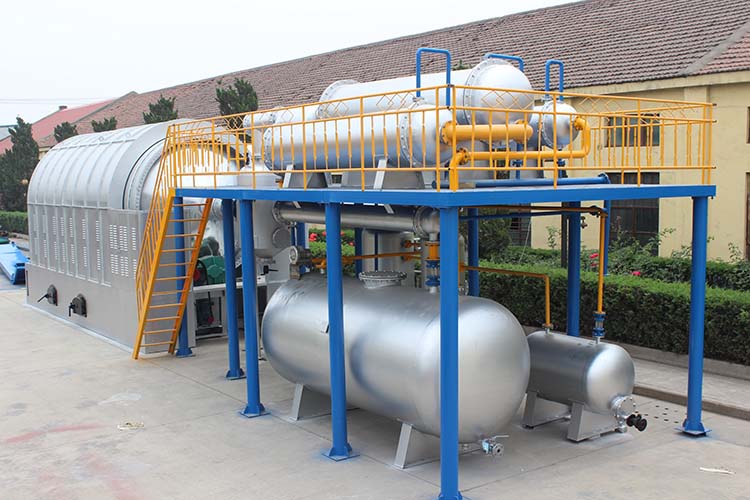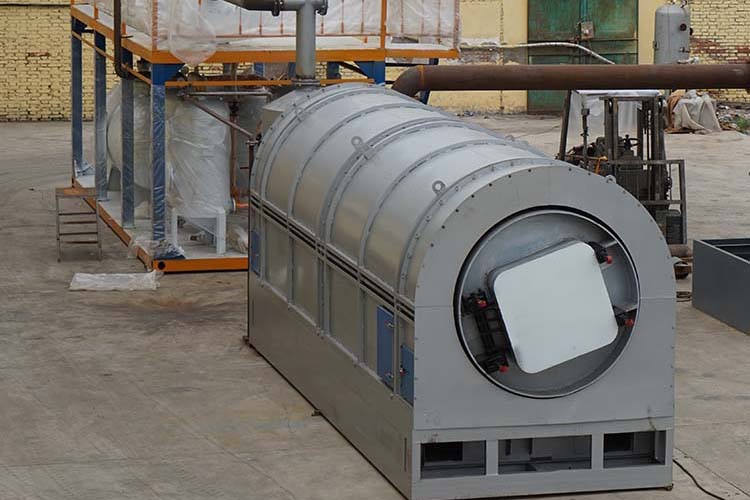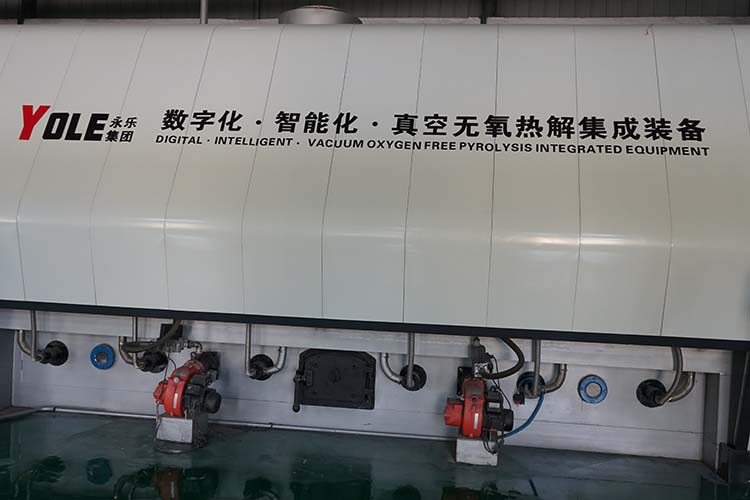The treatment of oil-containing waste residues is an essential environmental protection aspect in industrial production. With the increasing environmental protection requirements, an integrated treatment device has emerged that employs innovative processes to achieve efficient dehydration, harmless treatment, and resource conversion of oil sludge, offering a new pathway to address the challenges of industrial waste disposal. This device features a fully enclosed treatment process where the entire workflow—from raw material input to finished product output—is automatically controlled, reducing manual intervention while ensuring the stability of the treatment process.

During the treatment process, the oil-containing waste residues in the sludge pool are precisely delivered to a vacuum centrifuge drying and dehydration machine via a slurry pump. After one hour of centrifugation and hot air drying, the moisture content of the sludge is significantly reduced, forming a loose, granular semi-finished product. This phase accelerates moisture evaporation in a vacuum environment, coupled with centrifugal force to achieve the preliminary separation of oil, water, and solids, laying the foundation for subsequent in-depth treatment. The dehydrated material then enters an oxygen-free pyrolysis carbonization device, where organic matter undergoes cracking reactions under high-temperature anaerobic conditions, generating combustible gas and solid biochar.

The mixed gas produced during pyrolysis is fractionated and cooled through an oil separator, and the combustible gas is processed by a purification system before being returned to the heat supply unit as part of the internal energy supplement for system operation, thus forming a closed-loop energy cycle. This design significantly reduces dependence on traditional fuels, resulting in a comprehensive energy consumption reduction of more than 30% compared to conventional processes. The solid biochar product from pyrolysis, characterized by its porous structure and high carbon content, meets agricultural fertilizer standards after testing and is mixed with nutrient elements in a batching warehouse before being packaged into finished biochar fertilizer by an automatic packaging line, providing a sustainable resource for agricultural soil improvement.
The heat supply system of this process employs a waste heat cascade utilization technology to recover high-temperature flue gas waste heat from the pyrolysis stage back to the drying process, achieving efficient reuse of thermal energy. Operating data indicates that the waste heat recycling system can meet more than 60% of the device's thermal energy needs, while the intelligent temperature control module boosts overall thermal efficiency to 85%. Regarding environmental emissions, the flue gas purification system installed at the end of the production line ensures that indicators such as particulate matter and volatile organic compounds in the exhaust gas meet emission standards through multi-stage dust removal, activated carbon adsorption, and catalytic oxidation processes.

In terms of application effectiveness, such oil-containing waste residue treatment equipment demonstrates broad applicability in industries such as petrochemicals, ship maintenance, and coking.
Yongle Environmental Protection is mainly engaged in the research and development, production and sales of complete sets of technical equipment for organic solid waste disposal and comprehensive utilization. Production and manufacturing, domestic waste treatment equipment, tire pyrolysis equipment, medical waste disposal equipment, hazardous waste disposal equipment, and achieve efficient and comprehensive utilization of resources through independently developed low-temperature anaerobic pyrolysis equipment technology solutions.
Tags:Oily waste residue treatment equipment realizes energy recycling,Oil sludge treatment equipment,YONGLE GROUP
 Latest news
Latest news


























